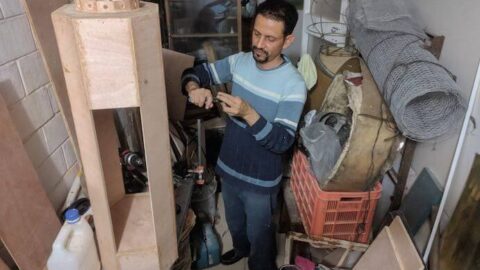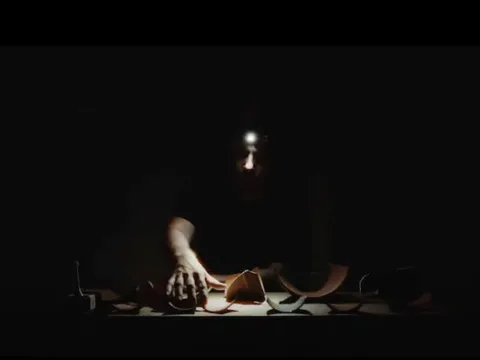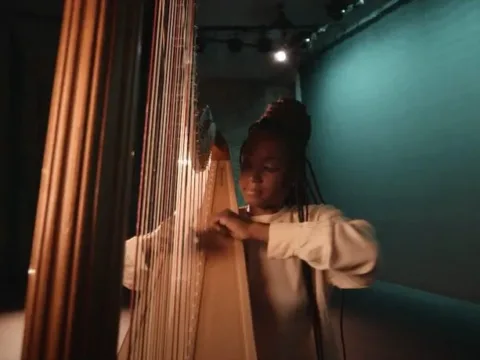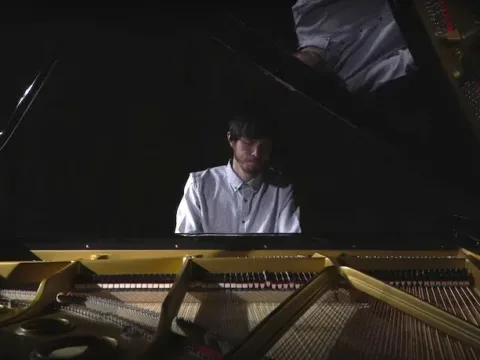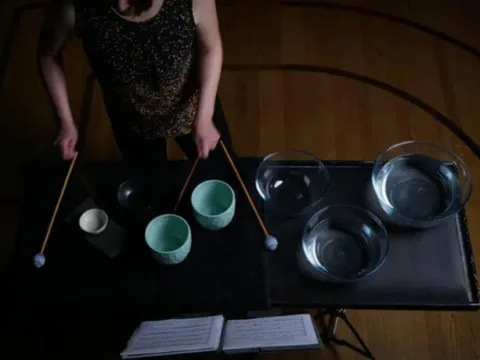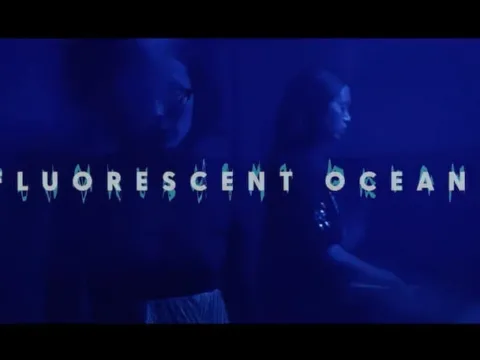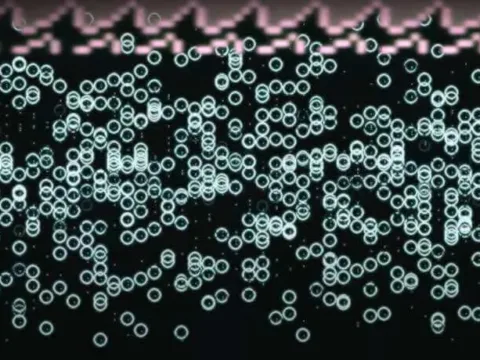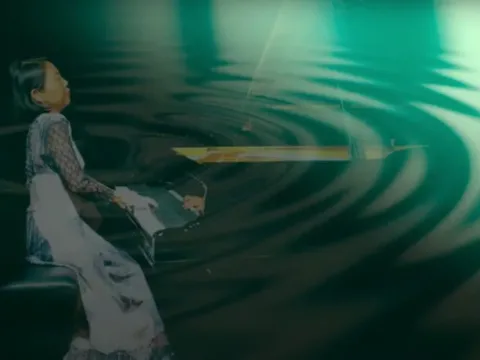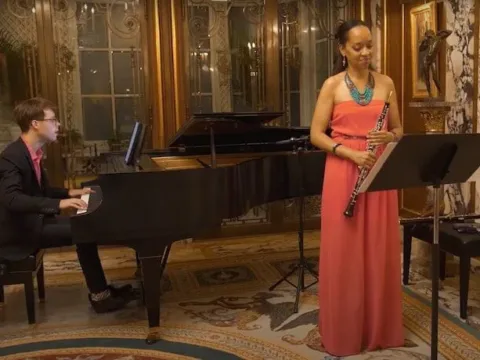Kirk Pearson is a Thomas J. Watson Fellow traveling the world on an odyssey of invented instruments, visiting the weird and wonderful tinkerers working to expand our musical lexicon. In Guatemala, he visited David Marín, a physicist who spends his time constructing instruments out of his preferred mode of transit–bicycles.
Before I even decided to visit Guatemala, David Marín tried to convince me not to go. “Your email is unusual,” he wrote in response to my request to visit him, “and even more here in Guatemala, where nobody gives a shit.” Jaded artists are a dime a dozen—I went to school with several hundred of them—but finding one who makes work as whimsical as David is, well, like finding a needle in a postmodern haystack factory. He’s a string theorist by trade, who got his PhD at Rutgers before returning to his native Guatemala. He’s kept the Central American accent but picked up the New Jersey ennui. “You are welcome to come visit,” his email continued. “That will give me an excuse to continue with some ideas, and get out of the extremely boring music scene over here.”
David is tall and skinny, and wears almost exclusively gray. He is easily one of the most joyfully inventive pessimists I’ve ever met, a fact that became incredibly apparent as he first led me into his house on the outskirts of Guatemala City. “My son has no idea what these are,” he says as he points upwards towards a giant, multi-wheeled bicycle hanging on hooks from the ceiling. The behemoth is the nCycle, David’s percussive, locomotive musical instrument. When assembled, the nCycle’s wheels turn in synch and they roll rubber balls into resonant, aluminum tubes. The sound is nothing short of magical, in fact, it’s what convinced me to go to visit him in the first place. “I hope to build it again some day, but where would I put it?” He had a point. David lives with Kanel, his adorable five-year-old son, who despite being a meter tall takes up the majority of space in the house. Kanel, like his dad, shares an enthusiasm for cutting things apart and making loud noises. There were few meetings between us that Kanel wasn’t present for, a bit like an enthusiastic mascot. (I tried to show him what happens when you throw a pack of mentos into something carbonated, and perhaps fortunately for David’s sake, it didn’t work).
The Marin household is filled with aluminum tubes, plaster casts of odd geometric shapes, and disassembled musical devices galore. David’s instrument assembly process is unmistakably playful—even more so than those from Costa Rica. His creations sit (both sonically and structurally) at a knickpoint between his mechanical background and love for ambient electronic music. The raw materials are principally recycled, stemming from both low arts funding and the sheer joy of the mechanical. We walk into the kitchen and he puts on Delia Derbyshire (the British electronic wizard who, among other things, composed and programmed the Dr. Who Theme). “This is what it will sound like,” David says, handing me a list.
That evening, we took a walk to a couple bike shops on La Sexta, downtown Guatemala City’s commercial drag. It’s early October, and churches blast small explosives off in their yards as per the annual tradition. “It’s to make sure God hears you,” says David, “although sometimes you wonder if it just makes God think people are shooting at him.” The bike shops sit among about three of these churches, and are David’s downtown haunt. I found the number of shops almost ironic as nobody in their right mind would volunteer to bike here, especially after 6 PM. Fortunately the shop was hardly busy; we seemed to be the first customers in weeks. The owner stumbled out of his chair with wide eyes and overzealously found everything on our shopping list. Here, in two shopping bags, sat the parts for what would be a month of meticulous instrument building.
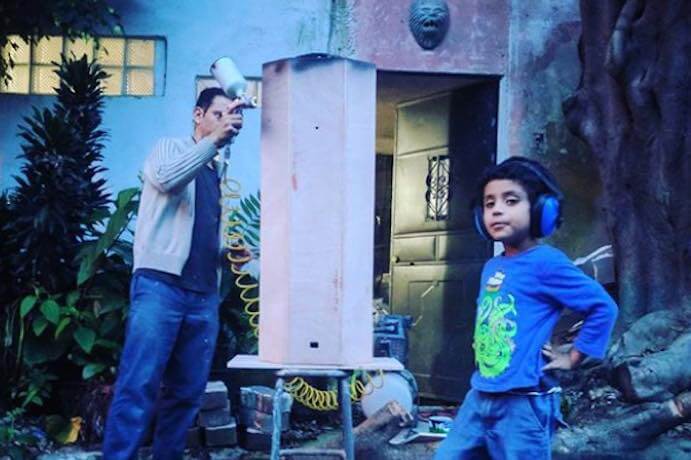
David’s comment about Delia Derbyshire was in reference to a sketch he made a few months prior. It detailed his plan for an instrument consisting of a hexagonal wooden box imposed by a veritable column of guitar strings. In the center of the column, an old electric drill with dozens of fibers spins erratically, striking the strings as they turn around. The randomness of the instrument led us to its name—La Caja Caotica, or “chaotic box.” It’s a bit hard to call it a musical instrument—you can’t exactly play Bach on it. In fact, with the exception of providing its initial tuning and slowly loosening the pegs as the rotor turns, you can’t actually control much of what it does. David borrows a page from the book of Joaquin Orellana (Guatemala’s renowned luthier), and calls it a “sound object:” a device that generates its own music, to be listened to as its own bandleader (with or without accompaniment). Perhaps La Caja’s most endearing quality its its ability to create its own, somewhat ghostlike melodies. Upon testing the instrument for the first time, David and I repeatedly were convinced that the neighbors were blasting trumpet music. As it turns out, the motion of the motor actually creates amorphous clouds of pitched material that slowly blend into one another. La Caja’s music constantly evolves, changes shape, and cadences like any other ensemble would. We’re quite happy with it.
La Caja Caótica (David Marín/Kirk Pearson) from Kirk Pearson on Vimeo.
Our second collaborative piece took us to David’s lab at Guatemala State University. It was in this lab where I first met Luis Ordoñez, a jovial electrical engineer with a love of memes (also, the first person I’ve met to turn on phone alerts for 9Gag). The second creation, La Bajicleta, is a modular electric bass, with two bike hand breaks that serve as a pitchbend mechanism. As one tightens the break, the string’s tension increases. Luis engineered a wonderful set of robotic arms that rotate small plectrums like a sequencer—allowing manual control over something that otherwise would sound at home in an early 2000s dance hit.
Bajicleta (David Marín/Kirk Pearson/Luis Ordóñez) from Kirk Pearson on Vimeo.
For me, the joy of “sound objects” stems from the idea that their sonic range is intentionally limited. Like José’ Duarte’s Raspamordedor or Luigi Russolo’s menagerie of futurist machines, these devices are not only limited in dialect, but limited in vocabulary. The music they can produce is merely a function of their design—human interaction is, in a sense, abstracted away. Instead of writing for an instrument’s affordance, building a “sound object” lets an instrument retain its own compositional control. How encouraging! The line between composer and interpreter is extinguished. It’s oddly democratic.
It has been about four months since I left Guatemala, where the instruments are waiting to become part of one of David’s larger projects. Frequently I look back to when my job was ripping apart bicycles—I rather miss it. Just about a day ago, David sent me a follow up email: “Kanel found a Mentos pack and made a Coke fountain inside the house, all thanks to you!” At the very least, I’m happy that I can still be held responsible for making a mess in David’s house, despite being 13,000 kilometers away. Godspeed.
